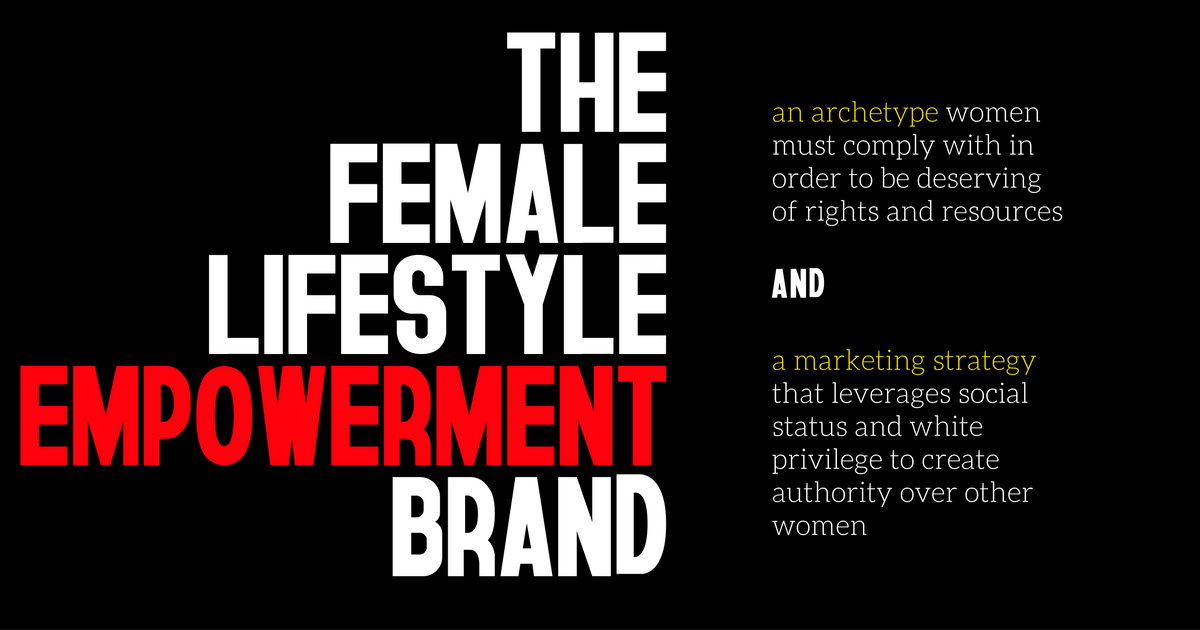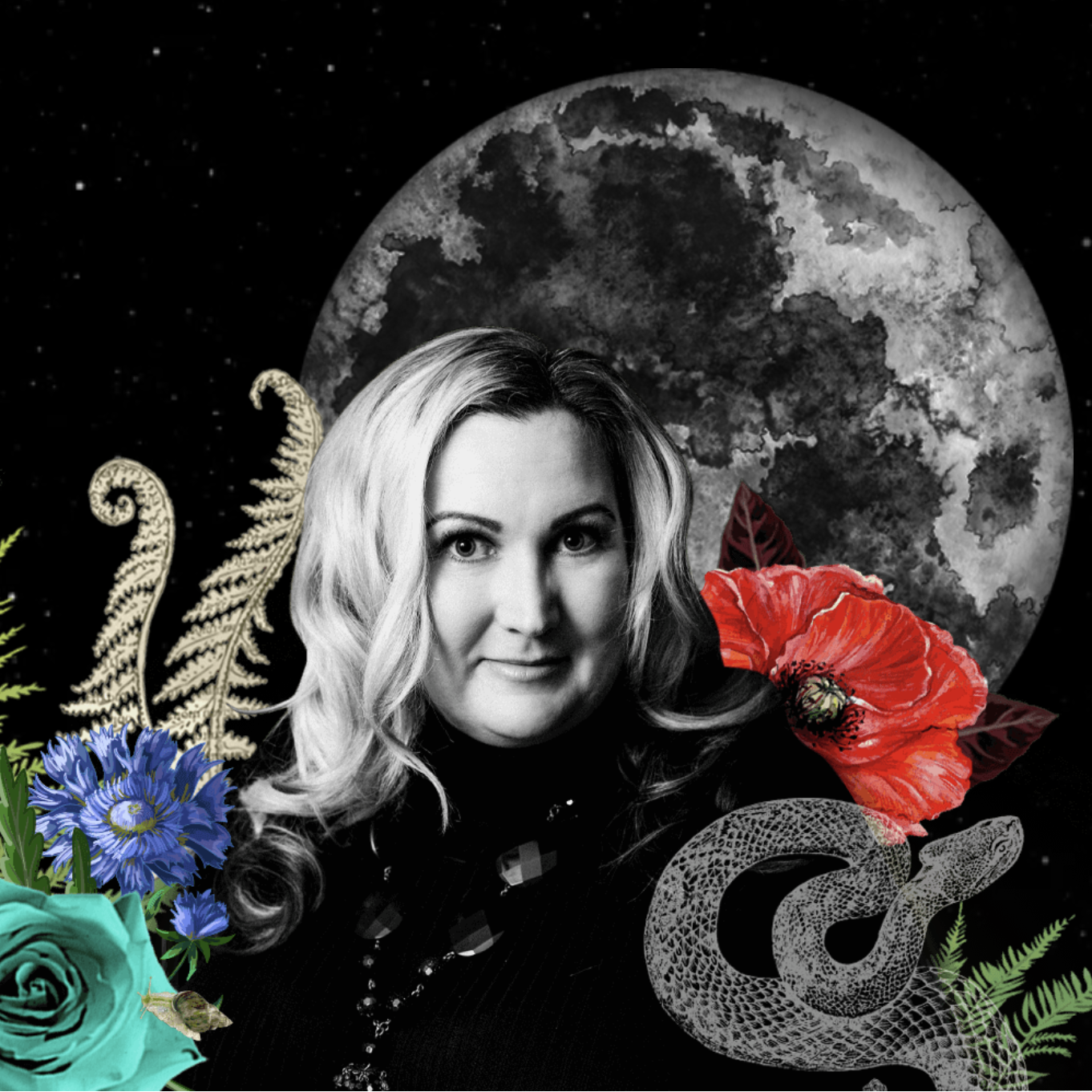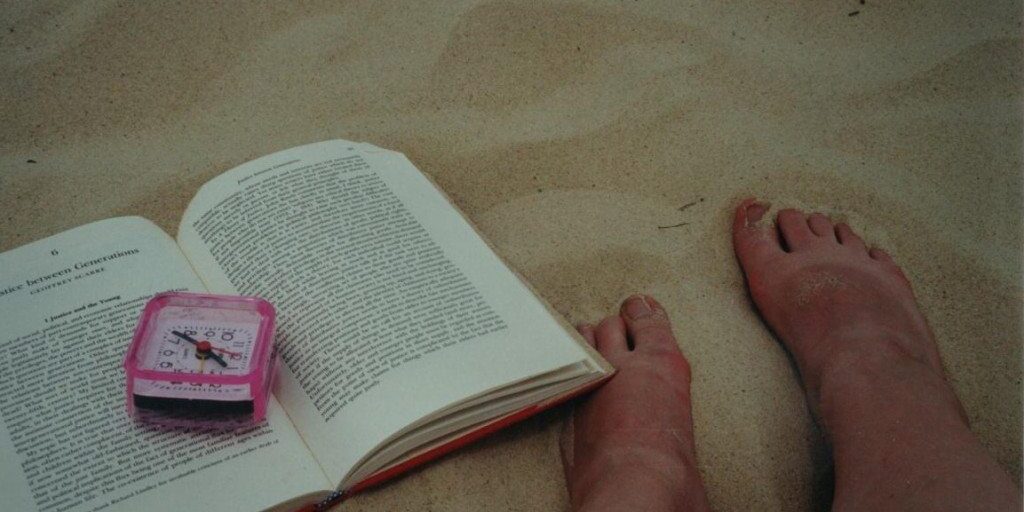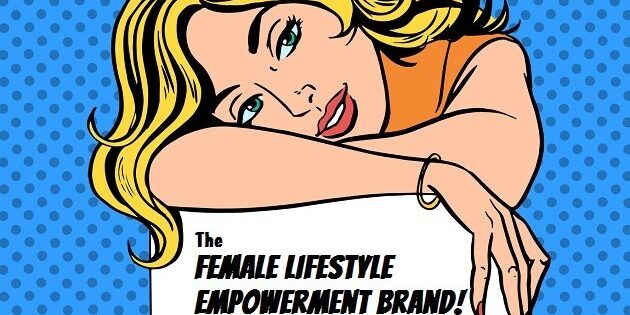
The Female Lifestyle Empowerment Brand: A Definition

I’m writing a book about The Female Lifestyle Empowerment Brand and every Sunday I send a newsletter working through it (this essay started out as a newsletter a few weeks ago).
If you’d like to stay in the loop, you can subscribe here (and thank you!).
The Female Lifestyle Empowerment Brand, the short definition:
[tweet_dis excerpt=”The Female Lifestyle Empowerment Brand is an archetype women must comply with and embody to get rights and resources”]The Female Lifestyle Empowerment Brand is both an archetype women must comply with and embody in order to be deserving of rights and resources[/tweet_dis] AND a marketing strategy that leverages social status and white privilege to create authority over other women and then calls the result — ceaseless labour, striving and shame for the female audience and profit for a select few female entrepreneurs — “empowerment”.
FEMALE is the archetype women must replicate and embody in order to be deserving of resources and rights.[tweet_dis excerpt=” LIFESTYLE is the way some women leverage white privilege and social status to create authority over other women”] LIFESTYLE is the way some women leverage white privilege and social status to create authority over other women[/tweet_dis]. EMPOWERMENT is the pop-culture, mainstream and deceptive conflation of individual success and wealth with collective liberation. BRAND is the process of intuitive, strategic and mandatory self-modification — curating one’s very presence — women must impose upon themselves in order to garner resources.
The Female Lifestyle Empowerment Brand, the long definition (+ context):
The Female Lifestyle Empowerment Brand is both an archetype women must comply with in order to be deserving of rights and resources AND a marketing strategy that leverages social status and white privilege to create authority over other women and then calls the result — ceaseless labour, striving and shame for the female audience and profit for a select few female entrepreneurs — “empowerment”.
The only reason empowerment and lifestyle are effective lures or grooves in our social minds and personal hearts is because it leverages women’s invisible reality of overwork, overwhelm, exhaustion, role overload, lack of resources and constructs the rare exceptions to that condition (women with privilege, beauty, wealth and leisure) as empowerment and leadership.
Lifestyle is not leadership. Individual success is not empowerment.
But more and more, empowerment, which is actually a collective condition of justice and equity, gets conflated with individual exceptionalism and personal financial success and used as bait for women who are struggling. The Female Lifestyle Empowerment Brand leverages the oppression of all woman in order to construct the authority and wealth of a few women.
We cannot allow our exploitation to be called empowerment. It’s a colonization of our imaginations, lives and freedom. It forecloses our possibilities for substantial and collective change and diverts all of our revolutionary and transformative energy back into a dehumanizing cul-de-sac of changing ourselves, our bodies and our identities to fit into an impossible archetype.
Also critical to grok: the ideological foundation of The Female Lifestyle Empowerment Brand is white supremacy and heteronormativity and ageism and ableism and, and, and. The first necessary condition for The Female Lifestyle Empowerment Brand is injustice.
I called it The Female Lifestyle Empowerment Brand because I see four interlinking patterns that intersect with each other to reinforce the social norms disempowering us — and which we then celebrate and name as our liberation.
If we call our exploitation “empowerment”, how will we ever get free?
1. The first pillar of the archetype and its industries (which includes our ceaseless labour and consumption) is FEMALE.
When I’m invoking ‘Female’ as a norm, I’m referring to an archetype of conventional femininity that we are required to become or display in order to access resources in our culture.
When I say Female, I’m talking about mandatory beauty and likability as prescriptions. The way we walk and talk in the world are prescribed by an imaginary ideal – Female – and the further we deviate from its dictates, the more likely we are to be unprotected, impoverished and marginalized in our society.
When I’m talking about Female, I’m calling attention to the interrelationship between your rights and freedoms and your identities — which is what Dr. Kimberlé Crenshaw calls “intersectional”.
When I’m talking about Female, I’m talking about how resources and respect and safety are a function of how closely you comply or deviate from the overculture’s ideal — which is Audre Lorde calls “The Mythic Norm”.
When I’m talking about Female, I’m talking about what Betty Friedan called The Feminine Mystique and Naomi Wolfe called The Beauty Myth (actually and even more appropriately, she called it “The Iron Maiden” in the book The Beauty Myth).
When I’m talking about Female, I’m naming the same mandate that Simone de Beauvoir did when she said “One is not born but made a woman.” That quote gets floated around a lot as a supposedly inspiring meme, but it’s actually dire and a warning. We are conditioned and socialized and molded and sometimes overtly forced to become what our culture deems to be acceptable and maybe ideal women.
It’s what Man Who Has It All brilliantly parodies when he (and of course he is a she) hijacks the inspirational meme and tells us to get over our guilt by dressing with flattering colours and cope with stress by getting up at 4am and growing our hair long.
It’s what Beyoncé challenges us to acknowledge when she tells us to go on and call Becky With The Good Hair.
Do you see all the capitalizations? We’re all trying to name a thing that is limiting and constraining our lives and foreclosing our self-expression and freedom. We’re all naming an archetype that is a particular version of the acceptable and ideal femininity that one must display in order to access resources including affection, attention, respect and validation in our culture.
That’s what I’m referring to when I talk about the female component of The Female Lifestyle Empowerment Brand. It’s an image, it’s an archetype, it’s a prescription, it’s a range a behavior and it’s a way of life.
When you imagine the perfect woman, what does she look like?
When you imagine the ideal professional, successful woman, what does she look like?
I’m guessing she’s not fat.
I’m guessing she’s not disabled.
I think you can see where this is going.
There is this cultural fiction, this animation, this archetype of femininity that’s been implanted and lives in our heads and in our collective body as a community. That image is a code for which woman embodies acceptability (on one end of the scale) and which woman embodies professionalism and exceptionalism (and on the other end of the scale) – and it’s the same woman.
In our culture, we have a lot of different iterations of the same basic form but the the skeleton and skin is always the same. She’s like Barbie: lots of different outfits, lots of different occupations, same basic material. (Which might be why we’ve got the cultural trope of ‘basic’.) We’ve got the California girl, the American Woman, the Professional Woman, the Good Woman, the Good Mother, and they’re all different flavours of the same basic skeleton — and that skeleton is a thin, heterosexual, young white woman who is pretty, charming, likable, agreeable and works ceaselessly to fulfill and exceed expectations.
What I’m also getting at when I mark this phenomenon as female is that although it serves a patriarchal order and the systems built around it, and although it may have been demanded and imagined by men in power or who have power over us (bosses, fathers, boyfriends etc), it is something that we as women keep co-creating.
We co-create the archetype and elaborate on it as individual women, as professionals, as friends, as mothers, as consumers, as citizens, and as a collective. We are the agents of socialization. We patrol each other. We maintain the boundaries and borders of acceptable womanhood and we even invent the content.
Literally. We write the content.
We are collectively intuiting this archetype, and then individually internalizing it, and then embroidering and distributing it. We flesh it out. We teach each other how to meet its demands, how to comply with it, and how to elaborate upon it. We even learn to profit from it.
This is where the archetype of mandatory femininity – Female – intersects with a form of public representation and marketing known as ‘lifestyle’.
2. The second pillar of The Female Lifestyle Empowerment Brand and its industries (which includes our ceaseless labour and consumption) is LIFESTYLE.
When we market to each other using lifestyle, what we are doing is showing people our lives in order to prove that we are the exceptional and therefore people to be envied and emulated. We are asking people interpret privilege and cultural trophies as the substance of leadership. We deliberately (and unconsciously) display those trophies because they are symbols of authority. Our unconscious minds associates symbols of authority with leadership. When we detect the symbols of authority, we switch into subconscious behaviour sequences and automatically (not consciously) defer to the person displaying those symbols.
This triggered, automatic and subconscious not a particular or individual defect. It’s the way our historical minds work. The entire sum of our human experience as social animals responds to these signals because they are indicators of social conditions — and correctly interpreting those conditions is how humanity survives.
So what women leaders deploying lifestyle marketing do – and I’d argue this is becoming the norm for the way we interact commercially and publicly with each other – is deliberately display the trophies associated with mainstream wealth and authority.
The soft and hard goods we choose to display are filtered through the Female lens (aka the lens of conventional and mandatory femininity) and so we show each other our beauty, beauty and thin-ness practices, desirability, charm, children, immaculate homes, vacations (leisure is in particularly short supply amongst women and so this is like a bat signal for The Good Life) and particularly feminine fetish objects like shoes and handbags.
[tweet_dis]Lifestyle is the culturally permissible way for women to manufacture authority[/tweet_dis]. The goal of lifestyle marketing is to create the association of authority with you in other women’s subconscious minds by displaying signals that trigger automatic, subconscious deference to you.
I said that Lifestyle is how women cultivate authority but there’s one more piece to that: that authority only extends over other women. Without an intersectional consciousness, even in our own spaces, we’re predictably going to segment into the same hierarchical power dynamics that are present in our larger culture.
AND.
When we’re cultivating authority over each other in gender-segregated spaces, we’re leaving the existing injustice in the public sphere intact. We’re not challenging corporate sexism and discrimination. We’re not running for office or voting in blocs. We’re not taking public leadership roles in our larger society. Instead, in our women’s spaces and women’s leadership roles, we’re neutralizing the woman factor that counts against us in the public sphere but leaving all the other intersectional oppressions in place. We remove social and collective change from the equation and jockey for power over each other.
When the archetype of ideal femininity intersects with lifestyle marketing and lifestyle representation it creates a gendered sphere of authority which a certain kind of woman – a woman with a particular class, racial, sexual and social identity – has authority over other women. In most cases, even if she starts out poor, she was able to signal and cultivate authority because she had a basic privilege – whiteness, youth, prettiness – that she could leverage to access resources, usually by extracting them from other women.
I’m describing way more clinically and deliberately than how it actually feels in action. A lot of this just happens and then, when it starts working (or when it’s not working well), entrepreneurs start seeking advice and get deliberate and strategic about it. We call that “marketing” or “business” rather than “exploitation” or “leveraging of privilege and oppression”. (A thing is still a thing.) Biz/marketing coaches will tell the fledgling entrepreneur to get professional photos in glamorous clothes and locations because when women want to be you, they buy from you. That’s the common way to explain it. The forensic way to explain it is this: Use your privilege – usually whiteness, youth and beauty – to activate and leverage their lack and deprivation aka their structural oppression.
So women lifestyle mavens use privilege granted by an unjust culture to cultivate authority over other women. They get famous and wealthy because they leverage privilege and oppression. They teach success models that depend on youth, beauty and whiteness – which means that their model will be impossible or exceptionally challenging for women who are not The Mythic Norm to replicate. I’ve met fat women who don’t get photos for their business. I’ve met women of colour who don’t display photos, not even in their bios or social media, because it reveals them as not-white. I hear all the time how, unless you’re young and skinny and white and pretty, the Female Lifestyle model of marketing will not work for you (or is unacceptable to you).
Female + Lifestyle = white privilege, and, when it’s extended into the promise of empowerment, white feminism.
3. The third pillar of The Female Lifestyle Empowerment Brand and its industries (which includes our ceaseless labour and consumption) is EMPOWERMENT.
When other women see the intersection of ideal femininity (Female) plus the privilege-based authority it creates (Lifestyle), it feels like a fantasy. It’s so far from where we are and it must feel so damned good. We want that wealth, leisure, ease and appreciation for ourselves. It looks like being the center of your own life and it looks like it feels good. More and more, that’s what empowerment seems to mean: as being the center of your own life and feeling good.
That’s a particularly individual interpretation of empowerment. It’s not talking about collective conditions at all – but the collective social reality and urge to materially change it for the better is empowerment truly means. Empowerment is a function of social conditions that foster justice, equity and agency.
Instead, pop-culture, self-help and success narratives turn empowerment into an individual achievement. Paradoxically – and deceptively – this emerging mainstream interpretation of empowerment in fact leverages the collective conditions of lack and disempowerment and time-suck and stress and role overload in order to present the rare exceptions to that commonality as empowerment. [tweet_box design=”default”]We’ve come to associate empowerment, which should be a collective condition, with individual exceptionalism[/tweet_box].
And we respond to it. We are hungry to be the centers of our own lives. We’re hungry to feel good. We’re starving for leisure and resources.
[tweet_dis]This collective hunger for empowerment is a pre-political urge for change[/tweet_dis].
The intersections between Female + Lifestyle + Empowerment reinforce the notion that this is how you change and escape your conditions and achieve empowerment as a woman. You conform to the mandates of ideal femininity, live the mandates of ideal femininity, and you cultivate authority over other less privileged women (and other women only), in order to access those resources — and those resources must be extracted from other women.
The segregated gendered spheres of privilege-based authority and faux-empowerment we’re creating and participating in leave the existing power and financial structures – the ones we have to comply with, retreat from, and circumvent – intact.
(As Ruth Whippman writes in Time, “You can safely assume that if an activity is described as “empowering,” no one in any actual position of authority will be going anywhere near it.”)
The fact that we need these women’s spaces and that they are some of the only places women can rise and lead reveals our cultural limits and cement ceilings. These spaces could be a place of collective organizing, fortification and skill-building – and sometimes they are – but for the most past, our most famous and well-compensated female icons and leaders activate our pre-political urge for power and well-being but, instead of acknowledging that this is a collective experience that we can change en-masse, they keep the conversation fixed on the individual – which prevents that pre-political urge from becoming a political articulation – and teach us to point the gun back on ourselves.
Our overwhelming responses to the prospect of empowerment – it’s the golden carrot – reveals that despite the presence of our star-powered exceptions, the basic condition of women in our culture is marginalization and subservience. After a hundred years of feminism, so many of us are – most of us?! – are still adjuncts accessories and helpmates in all the spheres of our lives and culture.
Why? At least in part it’s because the collective expectation about womanhood in our culture obliges us to perform endless rounds of emotional and change-thyself labour — which of course does not feel good and does not allow us to be the centers of our own loves. We’re exhausted. The dangling carrot of commercial empowerment reveals how disempowered we truly are as a collective.
The fact that lifestyle marketers, brands, advertising agencies and even political campaigns have realized that empowerment is a lucrative prospect and narrative reveals how powerful that pre-political urge of ours is. We want to be more powerful and well and whole. If empowerment was the norm, it would be invisible. We wouldn’t even have a word for it or be talking about it or be compelled to buy into it or perform it.
And so, in order to switch positions and activate all of this for ourselves – Female + Lifestyle + Empowerment – we intuitively opt into a personal branding process.
4. The fourth pillar of The Female Lifestyle Empowerment Brand and its industries (which includes our ceaseless labour and consumption) is BRAND.
In order to exhibit the characteristics of ideal femininity and perform the ideal woman, in order to get the trophies associated with lifestyle authority and therefore cultivate the authority for yourself over other women, in order to live in a state of empowerment that is individual exceptionalism, women have to put themselves through a female branding process.
Women have to become brands. In fact the very notion of “woman” is a brand. These days even women who are not business or public entities have to present themselves as brands. We have to control our representation and construct and perform a particular version of ourselves that complies with social norms (or, better yet, exceeds them) in order to access the basics of life or succeed.
Whenever we are deliberately trying to control the way we are perceived and engineer a particular impression in order to access resources – attention, respect, money – we are creating a personal brand. We tell the story of the woman we are and want to be and are required to be in our facebook feeds – and even women who do not have businesses have to present themselves as a brand. Good mommy. Good wife. Good woman. Sexy woman. Skinny woman. Career Woman. Balanced woman. High-achieving Woman. Pinteresting Woman. Well woman. Spiritual Woman. Happy Woman. Woman who has it all. We assume a character and select the highlight reels to display.
Women and girls have been trained to become a particular brand in order to be successful or even acceptable. We must be the perfect woman. We must be small, we must be pretty, we must be charming, we must be likable, we must be white, we must be heterosexual. If we aren’t, it will be hard to get the resources we need.
The female branding process means we intuitively comply with the mandates of the perfect woman – Female – plus we consume copious amounts of service material training us to comply. We train ourselves and other women to find themselves in mirrors and scales and the eyes of other people. We look at ourselves through their eyes by comparing that ourselves against the cultural prescription for The Perfect Woman. Then, in order to get the resources we need to survive and thrive, we make the necessary and sometimes bloody adjustments. We work on ourselves, always.
FEMALE is the archetype women must replicate and embody in order to be deserving of resources and rights. LIFESTYLE is the way some women leverage white privilege and social status to create authority over other women. EMPOWERMENT is the pop-culture, mainstream and deceptive conflation of individual success and wealth with collective liberation. BRAND is the process of intuitive, strategic and mandatory self-modification — curating one’s very presence — in order to garner resources including attention and affection.
And all of that, together, is pretty much the state of the union. That is The Female Lifestyle Empowerment Brand. We are constructing, complying, exceeding and leveraging the social conditions of oppression in order to create a select few individual exceptions. We leave the existing system and colonized cultural imagination intact and call that personal liberation.
And no thank you. We can do better than this.
I’m writing a book about The Female Lifestyle Empowerment Brand and every Sunday I send a newsletter working through it…if you’d like to stay in the loop, you can subscribe here (and thank you!).
Here’s a list of some of my essays about The Female Lifestyle Empowerment Brand:
- The Female Lifestyle Empowerment Brand. An introduction. This is my first essay on FLEB (Jan 2016). It sketched out the rough pattern I’m observing in the media and presentation of significant personal online brands founded by women.
- Not Enough Compensation in the World. A Rather Long Note on the Cultural Context of FLEB.
- Why I’m Writing About The Female Lifestyle Empowerment Brand
- The Female Lifestyle Empowerment Brand: We Can Do Better
- On the ‘Mental Triggers’ of Online Marketing, The Female Lifestyle Empowerment Brand, Assessing Who Deserves Your Money, and Why We Should Be Skeptical of Makeover Stories
- Liking Someone Can Be Terrible Information
- Ivanka Trump is Calling All White Women
- The Language of Activism, Feminism and Revolution is Not For Sale
- How To Sell Without Selling Out Justice
- Me and The Female Lifestyle Empowerment Brand. The Personal Backstory.
- Let’s Get Off This Ride and Get Justice
- Empowerment Chapters for The Female Lifestyle Empowerment Brand
ONE MORE THING: If you’ve read all this, and you’re a media-making entrepreneur thinking, shit, now what?…
You’re not alone. I’m wrestling with this too and so are lots of other feminist and socially conscious business owners. To that end, I’ve got some free feminist marketing tips that might help with reshaping your marketing and media so that it does not perpetuate FLEB. Check them out here.



